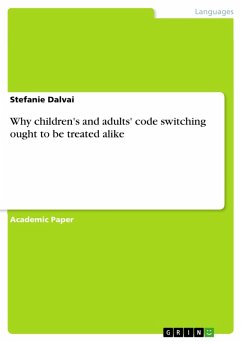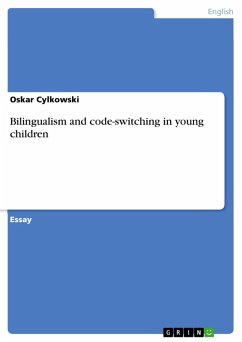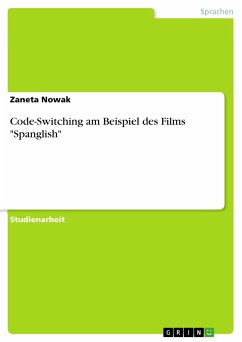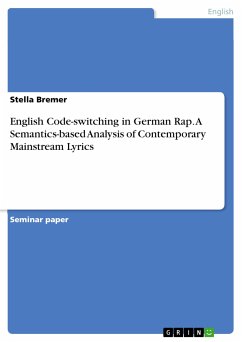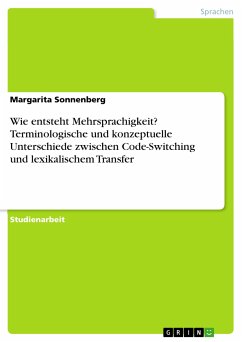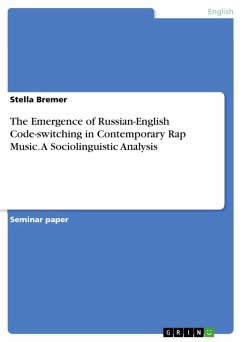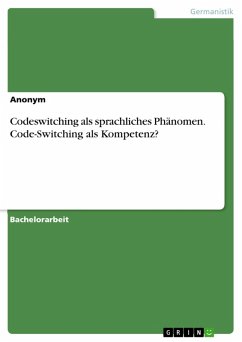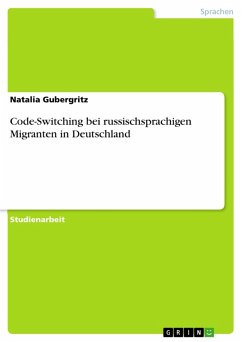Academic Paper from the year 2016 in the subject Speech Science / Linguistics, grade: 1, University of Innsbruck (English Linguistics), course: Systemic and/or Applied English Linguistics: Language Development in Multilingual Children, language: English, abstract: Even if there has been a change in time, code switching in children, in contrast to adults' code switching, is still regarded as a 'problem' by several people, professionals included. Even if the idea that a child should learn to answer in the appropriate language is per se right, it was the context in which it all happened which was wrong. Some people in my town believed that in a German-speaking kindergarten Italian shouldn't be used as it would contaminate the language of other children. This is not a single case but part of a large number of misconceptions which have led parents and teachers to think of code-switching as a kind of linguistic disorder and, consequently, sending children to professionals, who might also not fully understand the field of code-switching. This can lead to wrong assumptions, stigmatizing children who are intrinsically 'normal' as 'bad' speakers. All this fears don't apply to adults' code-switching as it is seen as something more rule-governed. That is why the aim of this research paper is to present several arguments to support the idea that code-switching in multilingual children is not the result of a lack of proficiency, but rather the consequence of a strategic use of both languages to facilitate the achievement of linguistic and social goals (Bullock 2009). Furthermore, it will be argued that there are not so many differences between adults' and children's code/switching and that, as a consequence, they should be treated equally. To demonstrate this, several studies will be presented in which adults' but, first and foremost, children's code-switching fulfil a complex socio-pragmatic function. In the end, evidence shall be given to prove that a third grammar of code-switching doesn't exist, and that therefore no description of a 'right' or 'wrong' way of code-switching can be postulated. This all shall attest that code-switching is an individual process which changes not only because of the different languages involved but also because of cultural phenomena. After a short definition of the term code-switching and its historical background, my personal connection to it will be presented, followed by the last two sections explaining the difference between adults' and children's code-switching through a juxtaposition of both.
Dieser Download kann aus rechtlichen Gründen nur mit Rechnungsadresse in A, B, BG, CY, CZ, D, DK, EW, E, FIN, F, GR, HR, H, IRL, I, LT, L, LR, M, NL, PL, P, R, S, SLO, SK ausgeliefert werden.

